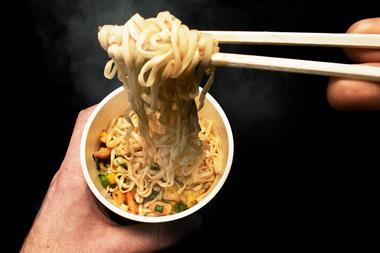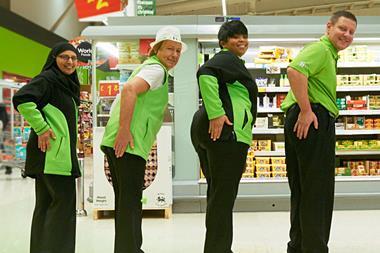Has food price inflation peaked? The Government thinks so. So too a number of supermarket CEOs. And if you take a peek at the graphs in the pages of the FT, commodities from fuel to wheat to milk are going in a delightfully deflationary direction.
But hold the phone. The graphs we see are mostly in dollars. The rest are in euros. Factor in sterling's plummeting value and, as the graph on p5 shows, since the end of October, the adjusted price of 12 key commodities in the UK is actually going up.
Of course, there's no guarantee commodity prices won't come down further, offsetting the price hikes manufacturers and retailers will face down the line. But with 50% of grocery goods imported, at the very least that puts the UK at a disadvantage to its international rivals. And when the global recovery comes, it means the UK will bear the brunt of any genuine inflation in commodity prices that a swing in the balance between supply and demand creates.
What's more, it's easily possible, with the Government announcing a £118bn increase in borrowing in its Pre-Budget Report this week, that sterling could weaken still further. The cost of credit default swaps on sterling certainly suggest it will. (And I thought, until the credit crunch came, that we were simply in the business of selling neeps and nappies.)
With so much overcapacity, manufacturers will be hard pressed, right now, to pass on any currency-based price hikes to the supermarkets. Certainly the supermarkets won't. Seeing the speed at which Tesco et al passed on the paltry 2.5% VAT savings this week shows how seriously the mults are taking the mantra that 'Every Little Helps'.
But if more suppliers go the way of Woolies (and this week we reveal that retailers are making contingency plans in the event of Bakkavör's collapse), the market is sure to tighten. So
I ask again: is it deflation we should all be worried about?
But hold the phone. The graphs we see are mostly in dollars. The rest are in euros. Factor in sterling's plummeting value and, as the graph on p5 shows, since the end of October, the adjusted price of 12 key commodities in the UK is actually going up.
Of course, there's no guarantee commodity prices won't come down further, offsetting the price hikes manufacturers and retailers will face down the line. But with 50% of grocery goods imported, at the very least that puts the UK at a disadvantage to its international rivals. And when the global recovery comes, it means the UK will bear the brunt of any genuine inflation in commodity prices that a swing in the balance between supply and demand creates.
What's more, it's easily possible, with the Government announcing a £118bn increase in borrowing in its Pre-Budget Report this week, that sterling could weaken still further. The cost of credit default swaps on sterling certainly suggest it will. (And I thought, until the credit crunch came, that we were simply in the business of selling neeps and nappies.)
With so much overcapacity, manufacturers will be hard pressed, right now, to pass on any currency-based price hikes to the supermarkets. Certainly the supermarkets won't. Seeing the speed at which Tesco et al passed on the paltry 2.5% VAT savings this week shows how seriously the mults are taking the mantra that 'Every Little Helps'.
But if more suppliers go the way of Woolies (and this week we reveal that retailers are making contingency plans in the event of Bakkavör's collapse), the market is sure to tighten. So
I ask again: is it deflation we should all be worried about?













No comments yet